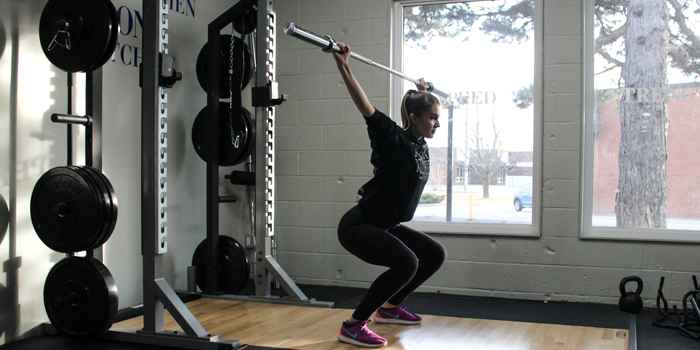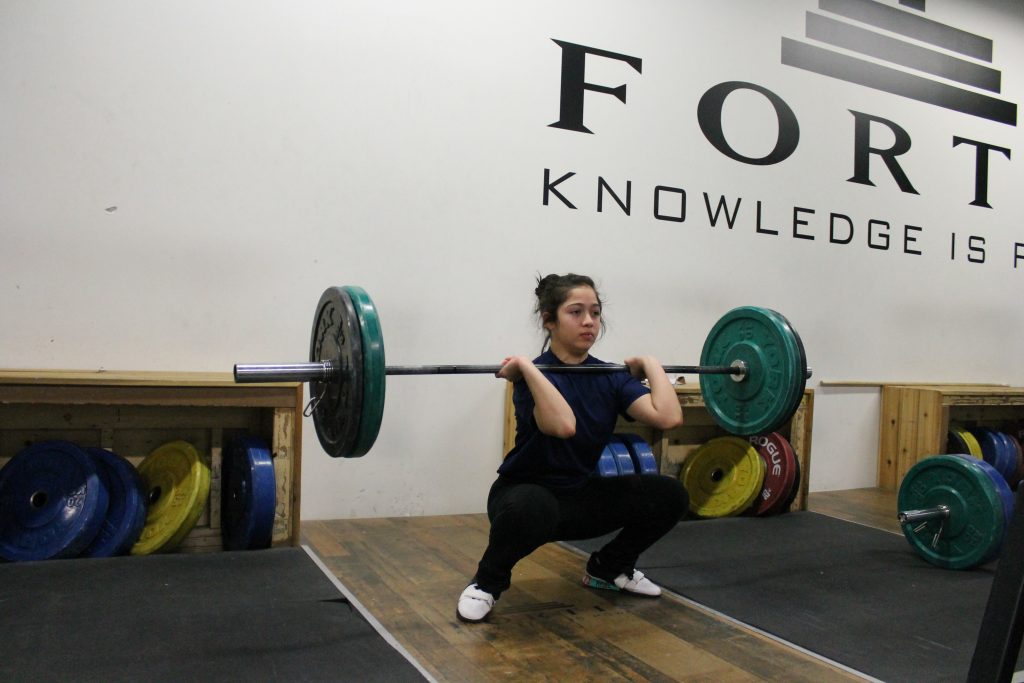
Olympic weightlifting looks fun (and it is), but it is also a great developer of speed and power. Athletes lift heavy loads with speed then get under it and get it overhead. The results of training the snatch and clean and jerk speak for themselves—weightlifters are among the strongest and most explosive athletes in the world. For decades now these lifts have been used with traditional athletes to build their strength and power, however, the competition lifts themselves don't build the same on-field athleticism some of their variations do. Your athletes are better off with the drills that will make them better, today. With the exception of pulls, all these variations should be trained submaximally in the three- to eight-rep range.
MORE: Design Your Olympic Weightlifting Program
Pulls
The pull is a more explosive form of a deadlift and incorporates full hip and ankle extension. Clean pulls are a great strength developer as the greatest possible load used in the weightlifting movements. Utilize them in less intense periods of your microcycle or further out from competition because when trained with an appropriate load they will leave athletes fatigued. The snatch pull eliminates the overhead squat position that requires more shoulder and hip mobility than most athletes have. When doing pulls you don't have to worry about absorbing force—pulls are all about creating force. Use snatch pulls to save your athlete's shoulders and promote recovery by training with a smaller absolute load compared to a clean pull. The wider grip will also challenge and develop the musculature of the upper back.
"Power" Lifts (Power Clean, Power Snatch)
It shouldn't need to be specified, but every completed lift with your athletes will be in the power position. Very few will have the mobility to drop into a full catch, and it is a position that rarely needs to be attained in any sport. The key use for the power lifts is developing the ability to go from a static position to explosive hip extension, the agility to reverse direction, and the strength to absorb the force of the bar coming back down. Due to both safety and effectiveness, these are best used as repetitive movements rather than max effort.

Hang Lifts
Hang work removes the static component of weightlifting and instead uses the stretch reflex to reverse and explode. Developing this quality is just as important for sport as doing so from the static position. Both need to be developed to have a complete athlete. Because of the increased time under tension, hang work aids more in hypertrophic gains, but increases soreness as well. I program them at least two-plus days out from competition or intense practices.
Lifts Off Blocks
When using blocks, athletes start in a more athletic position that better transfers to the field. Many will have to start with blocks in order to perform lifts correctly and may not be able to get down to a standard bar based on height or posture. Block height varies based on the purpose of the drill, but the two most important positions for athletes are at knee level or mid-thigh (the hang). Mobility is important for athletic health and longevity, however, there is no need to spend the majority of time loading athletes in positions they will never be in. Any coach who is weightlifting with athletes and not using blocks is leaving performance improvements on the table.
Jerk or Push Press Off Blocks
Jerks or Push Press Off Blocks are nearly the best drills for developing vertical power and power transfer from lower to upper body (if I had a bigger budget I would go with a Hammer Jammer). Working off blocks are the only vertical pressing barbell variations I do with my clients. Removing the eccentric loading and dropping the weight on the blocks makes overhead work substantially safer. The vulnerable shoulder position at the bottom of an overhead press and the possible "crashing" that can occur when athletes are fatigued at the end of a hard rep are not worth the potential rewards that can easily be duplicated with dumbbells, kettlebells, or fatbells (my preference).
Complexes
Complexes are a great way to kill more than two birds with one stone. You can pair two drills building separate qualities and then pair some additional hypertrophy work at the end. Due to the speed with which the lifts are performed, time under tension and muscle hypertrophy needs to be programmed. Example: 2 Clean Pulls + 2 Power Cleans + 5 Front Squats.
Technique
Strength and conditioning coaches get a lot of flack for videos of shit weightlifting in their programs. Yes, it takes a bit of time and cueing to ensure that your athletes are in the right positions, but take it from a weightlifting coach, you don't need to be a stickler for perfect technique.
Teach them:
- To be bent over the bar (unlike a traditional deadlift, but more like to a vertical jump).
- How to safely bail out from a missed lift.
- To front squat properly (this may include drills to open up the shoulders/wrists).
- To pull with accuracy and meet the bar without it crashing down on their shoulders.
Irrespective of the sport, if I have the choice between an athlete who can squat 400 pounds OR an athlete who can squat 400 pounds and throw 300 pounds in the air and catch it, I'll take athlete number two any day. In my current application of the lifts, three athletes who have performed them with the most consistency have broken national records and are moving onto the international stage. None of them are using weights that would be considered impressive at any local weightlifting meet or football weight room, but the strength, power, precision and focus required to excel at these movements has a tremendous impact on athletic development.
Sample Training Session (Swimmers)
- Dynamic Warm-up
- PRIMER: 3 sets of plyos supersetted with wrist, hip, shoulder, and ankle mobilizations
- Empty Bar Complex (2-3 sets) x 5 RDL + 5 Pulls + 5 Hang Cleans + 5 Front Squats
- Power-Strength Complex 3 sets x 5 Hang Clean + 5 Front Squat @70-75%
- Clean Pulls Off Blocks up to a max 3 (Set PR)
- Upper Body Circuit (3-4 sets)
- Abs
- Shoulder Prehab
Jordan Guilford spent four years as a fitness instructor for the Canadian Armed Forces and is the owner of Vej Athletics training and performance, working with athletes of all disciplines. He holds the Canadian single-ply squat record for the 165-pound class.











Glad to be of help -- hope you can starting putting some of this to use with your athletes right away!